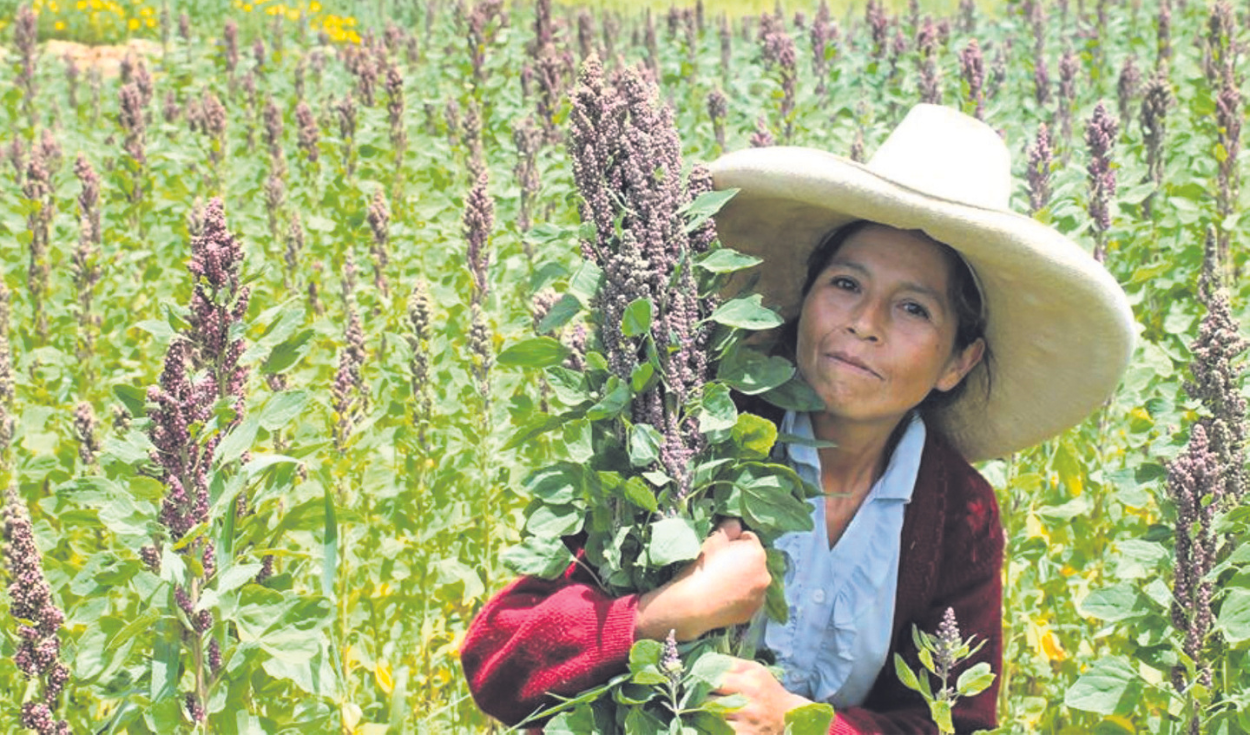
Last week the National Day of Andean Grains was celebrated, a group that includes quinoa, cañihua, kiwicha or amaranth and tarhui or chocho, which are also recognized as “superfoods” or “superfoods” due to their high nutritional value.
At the national level, these crops are the means of subsistence for more than 125,000 agricultural families, mainly in the regions of Puno, Ayacucho, Cusco, Apurímac, La Libertad, Cajamarca, Huancavelica, Arequipa and Junín, according to the Ministry of Agrarian Development. and Irrigation (Midagri).
According to official figures, in 2022, the production of the four Andean grains was approximately 142,600 tonswhich represented an increase of around 8,000 tons compared to the previous year.
85% of this volume corresponded to quinoa production, which also registered a 6% increase last year, reaching 113,400 tons.
quinoa fell
However, the current situation is very different for quinoa. Until April 2023, the production of this grain reached US$11,251 million, which meant a drop of 77.7% compared to the US$50,563 million that it registered in the same period of 2022.
José Luis Rabines, coordinator of the Midagri Andean Grain Chain, attributes this decrease in production to the climatic problems registered in the second half of 2022 in the high Andean areas of the country.
“This, in particular, because the large percentage of Andean grain production is limited to the central-southern highlands, which have been the most affected in terms of climate,” he comments.
Thus, he details that the droughts affected the germination process of the quinoa seeds, while the irregular rains caused phytosanitary problems during the growing and harvest season.
For his part, Jonathan Contreras Gavino, general manager of Aspagro, mentions that these weather events also affected crop yields. “A producer expected to obtain 2 or 3 tons per hectare, but harvested less than 500 kg“, account.
In this regard, the representative of Midagri affirms that, in order to face these climatic challenges, this ministry and other institutions have been working on various prevention and water management activities, as well as on the implementation of irrigation systems and micro-reservoirs to improve the conditions of crop.
Export problems
Organic quinoa exports to Europe have been affected because this grain has been considered a risky product by the European community since the beginning of the year, says Contreras.
For this reason, he explains, the EU has established additional procedures that have had an impact on national shipments.
Among them, the certifier will now take samples of the batches to be exported to Europe, a minimum of 10% of the total shipments per company to issue the transaction certificates (TC). In addition, you will need to add negative fosetyl aluminum assays. Regarding this aspect, Contreras emphasized that it has been the measure that has caused more difficulties in shipments of quinoa.
Data
Worth. Quinoa exports reached approximately US$100 million last year, according to Rabines.
Forum. On June 21, the quinoa technical table will be held in Ayacucho. It will address issues related to marketing and production. Producers, exporters and government institutions will participate.
Source: Larepublica
Alia is a professional author and journalist, working at 247 news agency. She writes on various topics from economy news to general interest pieces, providing readers with relevant and informative content. With years of experience, she brings a unique perspective and in-depth analysis to her work.











